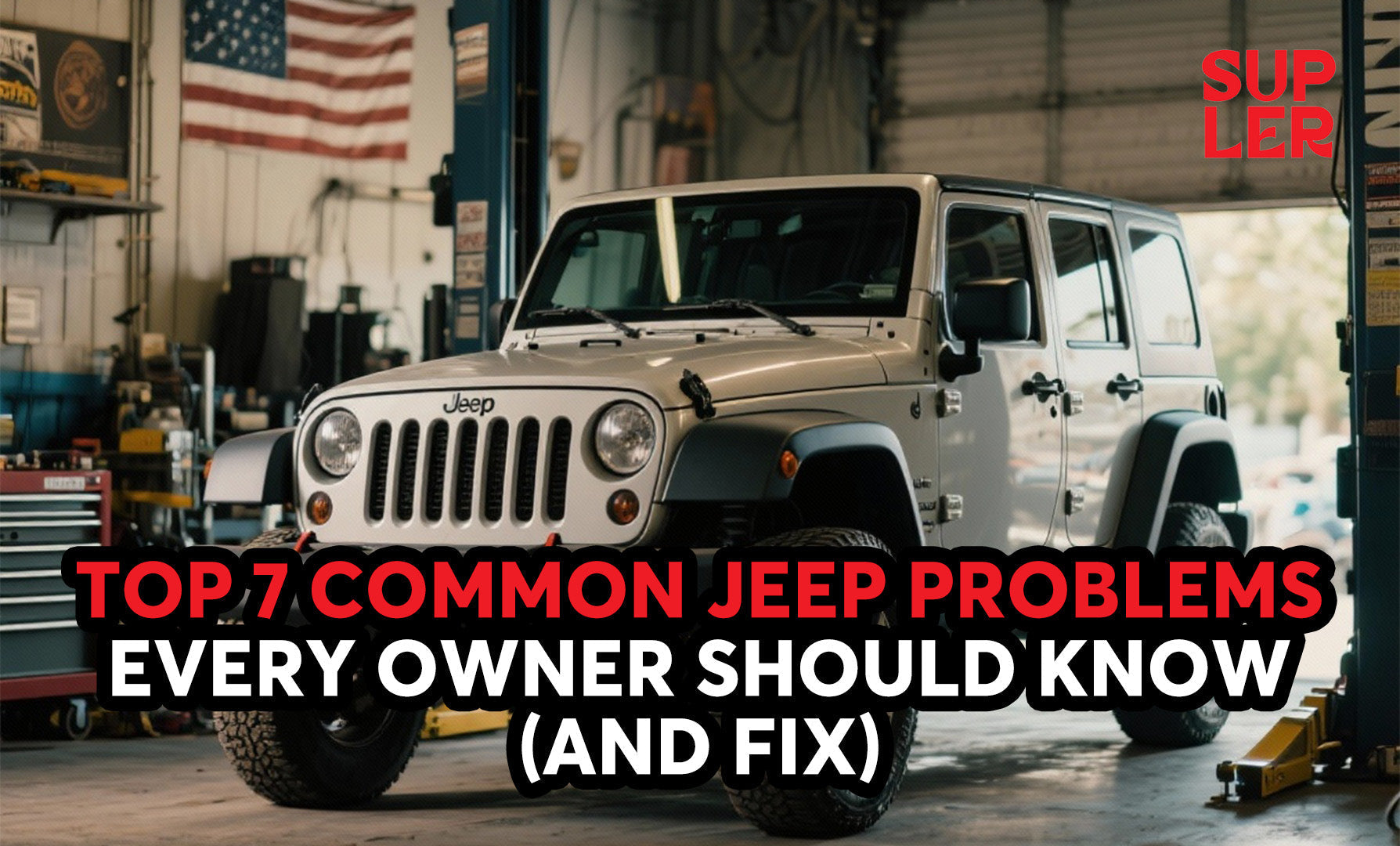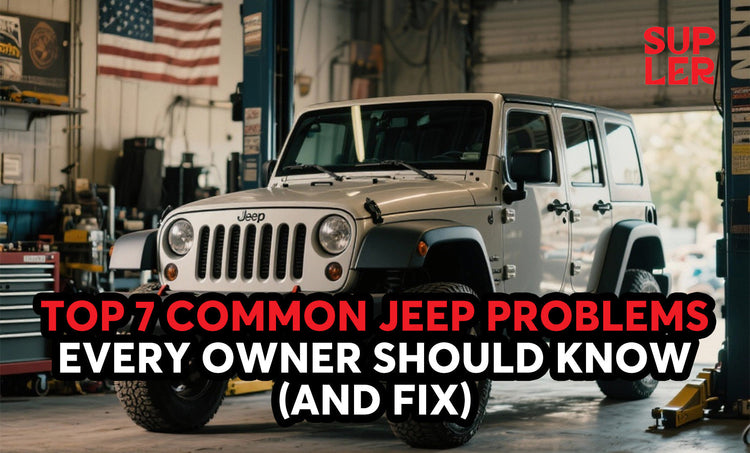Introduction
Jeep vehicles are iconic, rugged, and built for adventure. From the Jeep Wrangler Rubicon to the Jeep Gladiator and the Jeep Grand Cherokee, these machines symbolize freedom and unmatched off-road capability. But owning a Jeep also comes with unique challenges. Common problems like death wobble, water leaks, and transmission issues can frustrate owners if they’re not prepared.
In this article, we’ll cover the 7 most common Jeep problems every driver in the U.S. should know — and more importantly, how to fix or prevent them. Whether you’re driving a brand-new Wrangler 4xe or a used Cherokee, this guide will help you enjoy the Jeep lifestyle with fewer headaches.
1. The Infamous Jeep Death Wobble
The “death wobble” is the most dreaded issue for Jeep Wrangler drivers. It’s a violent steering wheel shake that usually happens after hitting a bump at highway speeds.
Causes: Loose suspension components, unbalanced tires, or improperly installed lift kits.
Fix: Inspect and replace worn track bars, tie rods, and ball joints. Get regular tire balancing and wheel alignment.
2. Water Leaks in Wrangler & Gladiator
Wrangler (especially soft tops) and Gladiator owners often deal with water leaks around doors, roof panels, or the windshield. Left untreated, this can cause mold, rust, and interior damage.
Fix: Replace worn door seals, check top installation, and use waterproof floor mats to protect the cabin.
3. Transmission Problems
Cherokee and Compass models with the 9-speed automatic transmission often experience rough shifting or delayed gear engagement.
Fix: Update the transmission software, check for recalls, and change transmission fluid regularly.
4. Electrical System Failures
Jeep electrical issues range from infotainment malfunctions to power module failures. Symptoms include stalling, faulty lights, or power windows that stop working.
Fix: Check fuses, replace faulty modules, or request warranty service from your dealership.
5. Oil Leaks
Oil leaks are common in older Wranglers and Grand Cherokees. Leaks may appear under the valve cover, oil pan, or crankshaft seals.
Fix: Regularly inspect for oil spots under your Jeep, replace worn gaskets, and monitor oil levels to prevent engine damage.
6. Suspension & Steering Issues
Off-road driving puts enormous stress on suspension systems. Worn shocks, bushings, or steering components can cause uneven tire wear, clunking noises, and poor handling.
Fix: Replace shocks, inspect steering components, and perform wheel alignment regularly to maintain stability.
7. High Cost of Ownership
Compared to rivals like the Ford Bronco or Toyota 4Runner, Jeeps often have higher maintenance, fuel, and insurance costs.
How to reduce costs:
-
Stick to preventive maintenance.
-
Use durable accessories like waterproof seat covers and floor mats.
-
Shop online for quality aftermarket parts and gear at better prices.
Prevention & Maintenance Tips
-
Follow oil change and tire rotation schedules.
-
Avoid cheap lift kits that compromise safety.
-
Join a Jeep club to learn from experienced owners.
-
Equip your Jeep with recovery gear, LED headlights, and camping setups for safer adventures.
Conclusion
Owning a Jeep comes with challenges like death wobble, leaks, transmission, and suspension issues — but these don’t have to ruin your driving experience. By staying proactive, you’ll enjoy both daily driving and off-road adventures with confidence.
👉 Ready to embrace the Jeep life? Explore our Jeep lifestyle clothing and gear at Supler Store — from custom Jeep hoodies to rugged off-road accessories.


